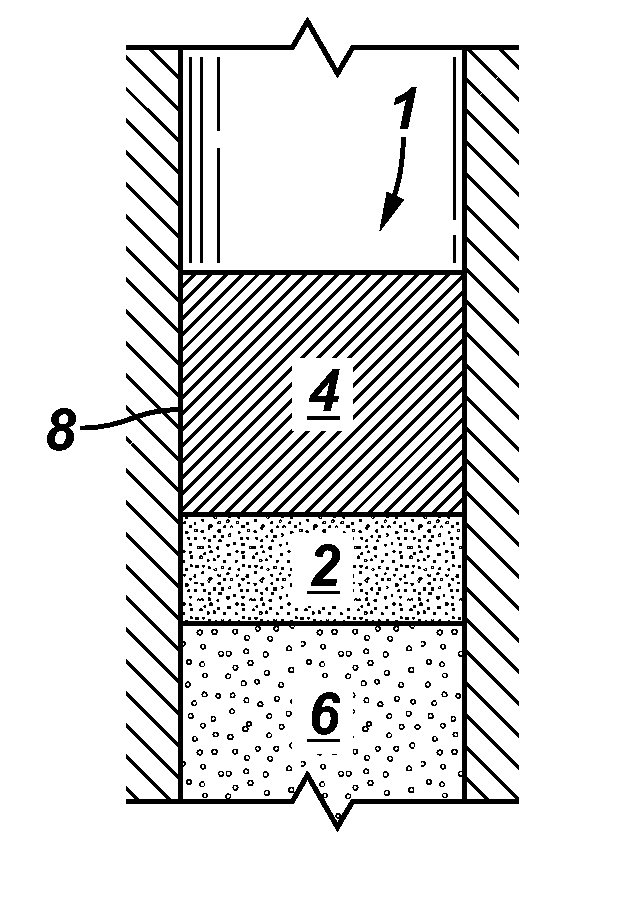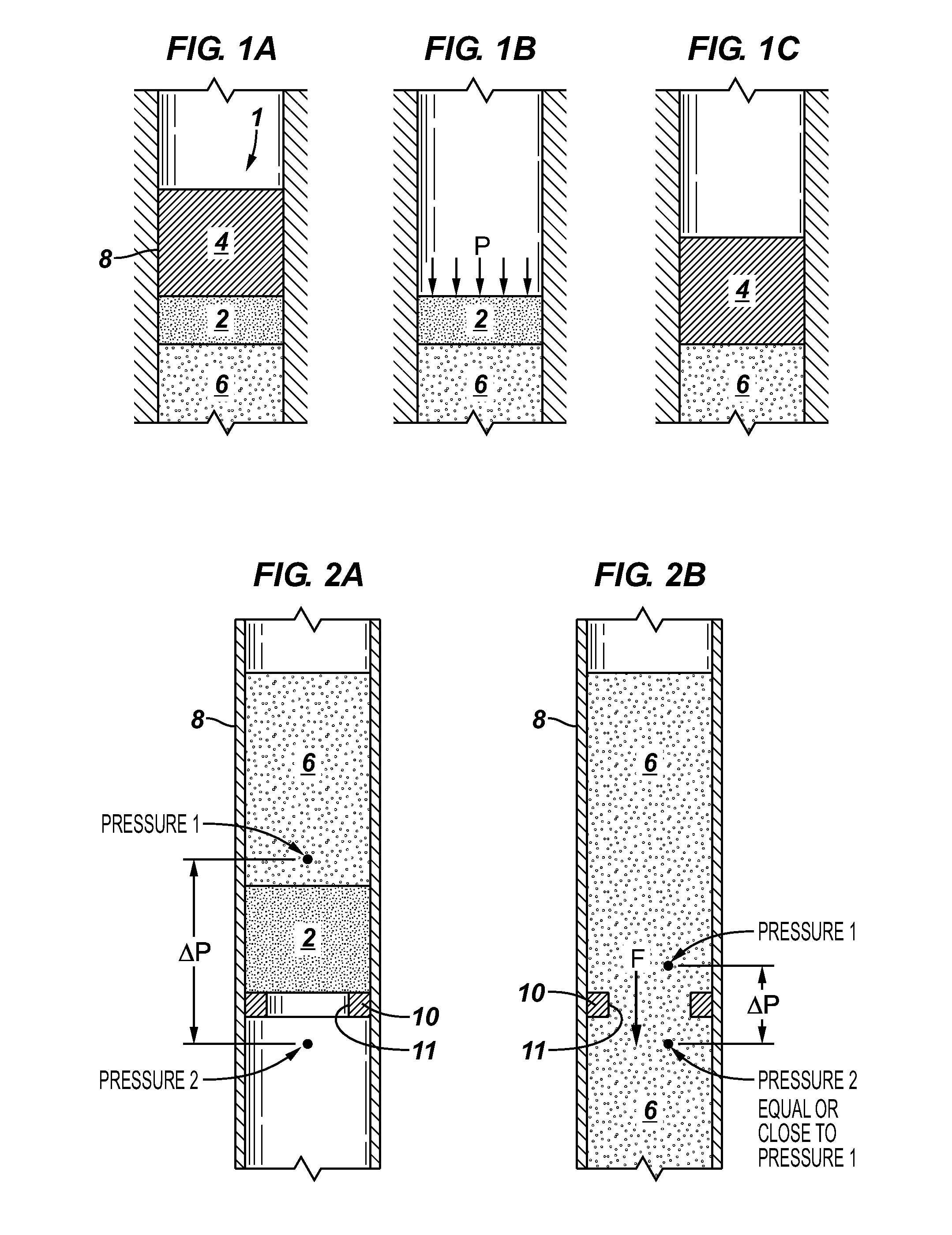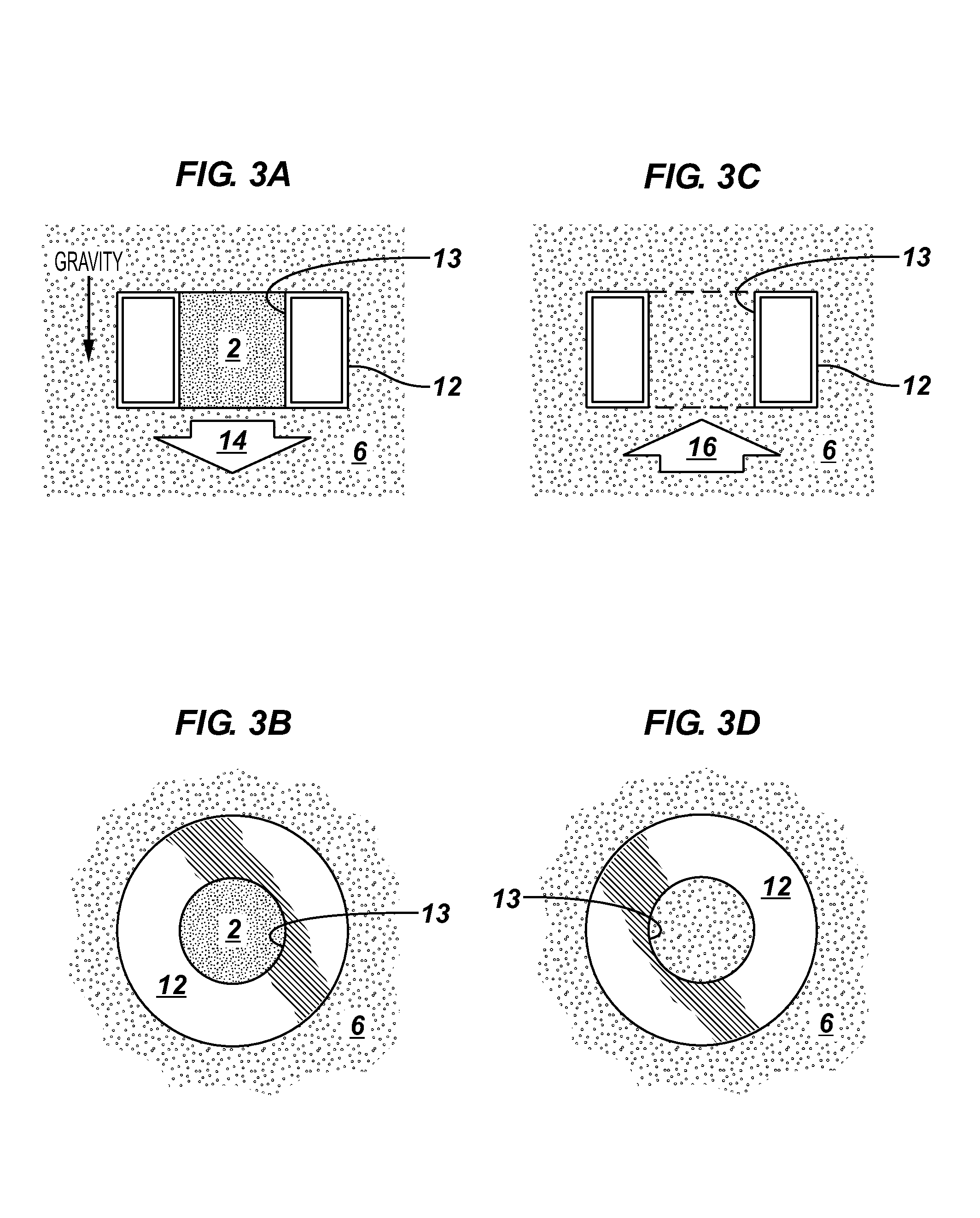Degradable compositions, apparatus comprising same, and methods of use
a composition and degradable technology, applied in the field of oilfield exploration, production, testing, can solve the problem of almost inexistent us
- Summary
- Abstract
- Description
- Claims
- Application Information
AI Technical Summary
Benefits of technology
Problems solved by technology
Method used
Image
Examples
embodiment 1
[0042]FIGS. 1A, 1B, and 1C illustrate an embodiment 1, wherein an inventive composition 2 and a subcomponent 4 are held in a pipe or other tubular 8. A corrosive fluid 6, such as water is in contact (flowing or stagnant) with one major surface of composition 2. Subcomponent 4 may be a metal or plastic piece that is forced downward toward composition 2, as depicted by arrows P in FIG. 1B (subcomponent 4 is not illustrated in FIG. 1B). After a time, which may be engineered to the desires of the operator, as composition 2 degrades for instance by dissolving, the result is illustrated in FIG. 1C. These figures illustrate that displacement and flow may be categorized as mechanical response, but the invention is not so limited and includes all applications wherein a mechanical response is linked to other devices, or creates a new response and / or signal. An electrical signal from a piezoelectric sensor would be an example of electrical response; an electric excitation to a light emitting d...
embodiment 30
[0057]2. A powder-metallurgy like structure (i.e. a composition with a structure developed by pressing, compacting, sintering, and the like, formed by various schedules of pressure and temperature) including a relatively reactive metal or alloy (e.g. an alloy of magnesium, aluminum) combined with other compositions (e.g. an alloy of copper, iron, nickel, among a few transition-metal elements) that with the first and relatively reactive composition develops galvanic couples, preferentially strong for a rapid degradation. The result from the combination of these metals, alloys or compositions is a new degradable composition that may be also characterized as a composite composition. However, because of the powder-metallurgy like structure, voids or pores may be intentionally left in order to promote the rapid absorption of corrosive fluid and thus rapid degradation of the formed compositions. Such compositions of the invention may include one or more of fine-grain materials, ultra-fine...
embodiment 40
[0058]3. Composite and hybrid structures comprising one or more reactive or degradable metals or alloys as a matrix, imbedded with one or more relatively non-reactive compositions of micro-to-nanoscopic sizes (e.g. powders, particulates, platelets, whiskers, fibers, compounds, and the like) or made from the juxtaposition of layers, bands and the like, as for instance in functionally-graded materials. In contrast with compositions in category 2, these compositions of the invention are closer to conventional metal-matrix composites in which the matrix is degradable and the imbedded materials are inert and ultra-hard so as to purposely raise the mechanical strength of the formed composition. Also in contrast with compositions in category 2, voids, pores and other spaces where the corrosive fluid could rapidly infiltrate the composition are not particularly desirable as the matrix is already degradable, and primarily needs a reinforcement. FIG. 6 schematically illustrates an embodiment ...
PUM
| Property | Measurement | Unit |
|---|---|---|
| galvanic corrosion potentials | aaaaa | aaaaa |
| thickness | aaaaa | aaaaa |
| thickness | aaaaa | aaaaa |
Abstract
Description
Claims
Application Information
 Login to View More
Login to View More - R&D
- Intellectual Property
- Life Sciences
- Materials
- Tech Scout
- Unparalleled Data Quality
- Higher Quality Content
- 60% Fewer Hallucinations
Browse by: Latest US Patents, China's latest patents, Technical Efficacy Thesaurus, Application Domain, Technology Topic, Popular Technical Reports.
© 2025 PatSnap. All rights reserved.Legal|Privacy policy|Modern Slavery Act Transparency Statement|Sitemap|About US| Contact US: help@patsnap.com



